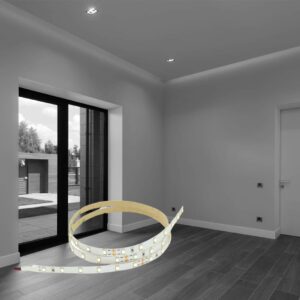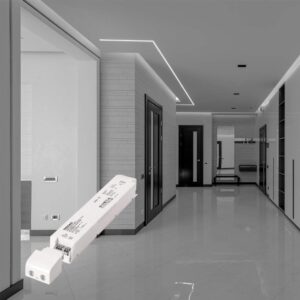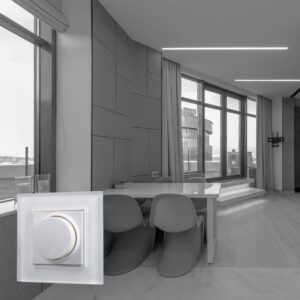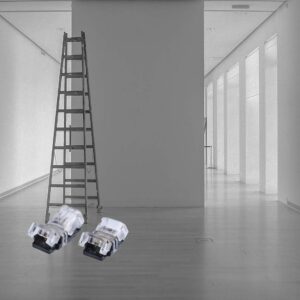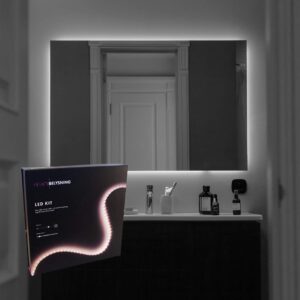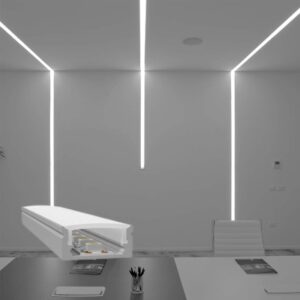Low voltage LED lighting
Low voltage LED lighting
Choose low-voltage LED lighting in your home to create special effects or as general lighting
The use of LED lights have gained a huge range of applications in recent years
We see that more and more people are choosing low-voltage LED lighting to create special effects or as general lighting.
It is expected that LED technology will become the most applicable light source on the market in the future.
We know that LED technology and the countless solutions can be difficult for many to understand, so we have tried to make it easy for you to choose.
LED strips come in many different types, qualities and price ranges. We have collected the types we believe are best suited.
All our strips have 60 LEDs or more per meter to provide an even light that is nice to look at. In addition to good light output, most strips also have RA90 +, which means that the light reproduces colors better than most LED strips on the market.
How to choose:
Select the type of LED strips and the length you need. Select the type of LED driver you need. If you want dimming of the lights, select dimmer and switch / remote control.
Nice to know about low voltage LED lighting
What is the difference between low voltage and 230V LED strips?
In short, a 24V LED strip is much more energy efficient than 230V and 12V.
Low voltage LED strips are best suited indoors, because they do not flicker as 230V LED strips can do.
Which IP rating should I choose?
First and foremost, you need to decide where you want to install LED strips. Should they be installed indoors? Or outdoors? Or in a bathroom?
IP-rating is a number that tells how well the LED strip is protected from dust and water. IP 20 rate means that it is suitable for indoor installation, IP 65 means that it is suitable for outdoor installation, and IP68 means that it can be installed under water.
How bright light do I need?
The strength of the light source is called Lumen (lm).
Depending on where the LED strip is installed, the following instructions may be helpful:
- 750-2000 lm = Shop, workshop
- 500 lm = Kitchen, bathroom, office
- 200 lm = Hallway, stairs
- 50-200 lm = Living room
PS: LED stripes can also be dimmed so that the intensity of the light can be adjusted.
Who is Kelvin?
Kelvin(K) is a number that tells the color temperature of the light source. Typically for homes, 2700K is recommended. For garage, office, construction site etc. it is often correct to choose between 3000K or 4000K.
- 2700K gives warm white color temperature
- 3000K gives warm white color temperature
- 4000K gives cool white color temperature
What does RGB and RGBW mean?
RGB - Multicolored LED light with the colors red, green and blue which together give 16 million color shades.
RGBW - RGBW corresponds to RGB, but can also give pure white light in color temperature 3000K
What does CRI / RA mean?
- CRI (Ra) indicates the ability to reproduce colors as naturally as possible
- The higher the CRI / RA (color rendering), the more natural the colors will appear
For example, if you are going to illuminate a painting, it is important that the color reproduction is high, but as secondary lighting, such as stair lighting or as outdoor lighting, the CRI / RA number is often less important.
What does LED/m mean?
LED/m indicates how many LED diodes there are per meter. With more diodes per meter, the LED strip will give you a more even light throughout the length of the strip.
In cases where the LED strip is exposed directly when installed, it will be important to have as many LEDs per meter as possible to get an even result.
However, if you are going to install the LED strip in a deep aluminum profile, the number of LEDs per meter is of less importance. Then it is more important to think about the brightness (lm).
Driver - Do I need that?
Which driver should I choose?
The choice of driver depends on the power consumption of the LED strip you are going to use and how many meters you are going to connect.
Example: With an LED strip of 4 watts per meter, and a length of 10 meters, it will be 4W / m * 10m = 40 watts. This is a minimum, and we recommend adding a 20-30% more powerful driver.
Is there anything else I should consider when it comes to choosing a driver?
Yes. All LED stripes need a driver, and you have to consider if you are going to:
- be able to dim the LED strip
- consider where you are goine to install the LED strip. Outdoor or indoor?

